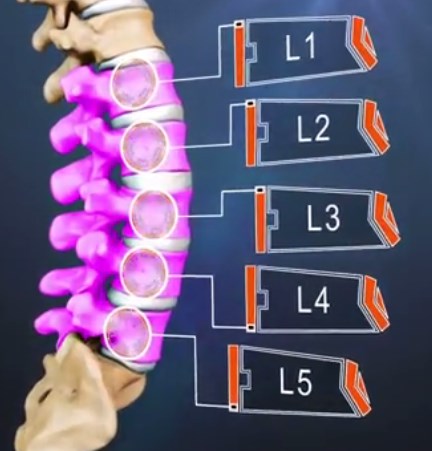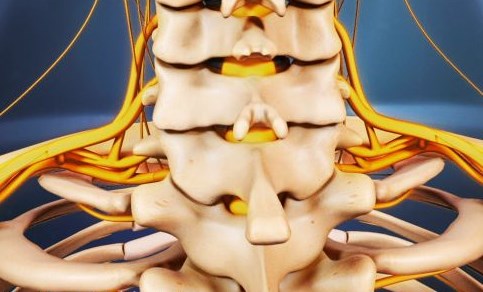
the osteologistía is the study of the structure and functionóno of bones. This branch of the anatomyídescriptive not only studies bones in general, spaghettiédoes not include the specific bonesíwe stay. The notches and grooves are úunique and characterísticos of each hueso.
in the osteologyíWe study the human anatomyíto the skeleton, the physiologistía and morphologíto the bone. Así as growth and development in available material.
the osteologistía humana isá closely linked to archeologyía, because it allows us to know our ancestors. the osteologistíhuman tooén can be used in paleontologyíand a y anthropologistíthe forensics.
For example, it is often thought that the cráneo is just a bone itselfí, but in reality the same are all the bones of the head, including the commandíinferior bulla. we are talking about meás de 20 bones, that can be divided into two large groups, the facial bones and the bones that make up the neurocráneo.
In the development of this artíass we will focus the relationshipóno of osteologyíto and the spine.
Index
Osteologíto the spine
Before entering the región of the dorsal spine, we must mention the structures óseas of the ribs and sternumón. These help protect vital structures like our lungs and heart.ón the algaeúand yesñO. Spaghettién helps us breathe.
ribs and sternumón they are as diversified as the cráneo somehow. For instance, the sternón is divided into three distinct sections: handlebar, body and apóxiphoid physis.
the osteologistía of the vertebral column encompasses all structures óyou and your immediate environment.
The vertebral column is located in the línea media posterior, prolongáascending from the base of the cráneo up natal cleft. She holds her head, the scapular waist, the tor boxácica and joins the pelvis.
This system óseo isá composed by 24 vévertebrae separated by intervertebral discs and sacral segments. The Vévertebrae are grouped into groups based on an osteologistíto this way: 7 vévertebrae in the cervical spine, 12 vévertebrae in the thoracic column and 5 vévertebrae in the lumbar spine. The sacrum has 5 fused vertebral segments, and the cóccyx has of 3 a 5 vertebral segments.
Osteología: Vertebrae
The vertebral body is largely responsible for supporting the weight of the spine and the body above it.. the tamañor of the vertebral bodies increases along the spine in relation toón al tamañor and the weight of the body that supports. The intervertebral disc is what helps to articulate each vévertebra above and below.
Then we find the neural arch, which isá composed of the bone posterior to the vertebral body and having several individual components that fuse to form a ring that surrounds the spinal canal.
Osteología: cervical spine
The cervical spine is the upper part of the vertebral column that extends from the base of the cráneo until the tórax at the level of the first vértebra. In general, consists of seven vévertebrae: C1, C2, C3, C4, C5, C6 and C7. fulfills the functionón to support the cráneo and hold positionórelative n of the méspinal game.
Unlike the atlas, the axis has a vertebral body and an additional process called the odontoid process. This process allows for a large degree of rotation.ón between the atlas and the axis. Opposite the odontoid process is the apóphysis espinosa bítrust.
The atlas and the axis (C1 and C2 respectively) they have characterísticas úunique. The Vécervical rtebrae C3 to C6 are known as vértebras típicas because they share the same characteristicsíb sticasásicas of the majoríat the vévertebrae along the spine. At véprominent spine (C7) deviatedíto the fatherón general, the app is often foundóphysis espinosa más prominent.
 Osteología: thor columnácat
Osteología: thor columnácat
thor columnácica is located in the middle part of the vertebral column. Extends below C7 to above L1 in the lumbar spine. The Vértebras torácycas are 12, called T1-T12.
in the vélumbar vertebrae the segments are más large. They are characterized by the absence of the transversary foramen and by the absence of facets on the sides of the body.
CharacteríGeneral Stics of the Thoracic Columnácat: Triangular foramen vertebral form, quadril spinal processáwomb and great body with geometryía de riñón.
the fifth vélumbar vertebra has a characteríprivate stic, and it is that his body is much moreáIt's deeper ahead than behindás, to facilitate articulationón sacrovertebral
thor columnácica is characterized by its articulationón with the ribs, these restrict movement a bit. every vévertebra has three points of articulationón with the ribs. This area is the más móvile between all segments of the spinal column.
The facets are those found on the sides of the vertebral body and help articulation.óno of the ribs. If the facet is between 2 vertebral bodies we name it demifaceta, these look like depressions in the vertebral body.
The upper demifacet of a vértebra torácica articulates with the corresponding rib, known as jointón costovertebral. This rib then articulates again with the costal facet in a process called articulation.ón costotransversa.
 Osteología: lumbar spine
Osteología: lumbar spine
the osteologistía of the lumbar spine consists of five vévertebrae belonging to the middle and lower vertebral column. They play an important role in lumbar lordosis, a natural curve in the spine, which is convex in the anterior sense. It's a necessary curve, since thanks to éThis vertebral column absorbs the many daily loads.
They are similar in shape to other vertebrae, the osteologistía of each vélumbar vertebra can be seen as follows:
- The body is shaped like a riñón, it is convex in the anterior part, flattened at the back. The vertebral canal is triangular.
- The transversal processes areán laterally projected on both sides. L3 has the transverse processes más long lumbar spine.
- The lámine is wide and thick.
- The superior and inferior articular processes meet in the álateral angle of the láminas, in unióno with the pedíass, connected to través of the pars interarticularis
- There will beóspinous physis is short, gross, and is shaped like an ax.
Facet joints, zygapophyseal calls, allow flexi movementsón, extensionón and abductionón. La rotationón is very limited and can rarely occur in the lumbosacral joints.
Osteología: the sacrum
The sacrum is a large, triangular-shaped bone at the base of the spine, at the top and back of the cavity pélvica. It is inserted like a cuñbetween the two hip bones.
Its upper part connects with the úlast vélumbar vertebra and the lower part with the cóccix. in the niñthe minors of 15 años, comes in five véunfused vertebrae. These begin to merge between the ages of 16 a 18 años. At the age of 26 añyou are expected to beén completely fused into a single bone.

